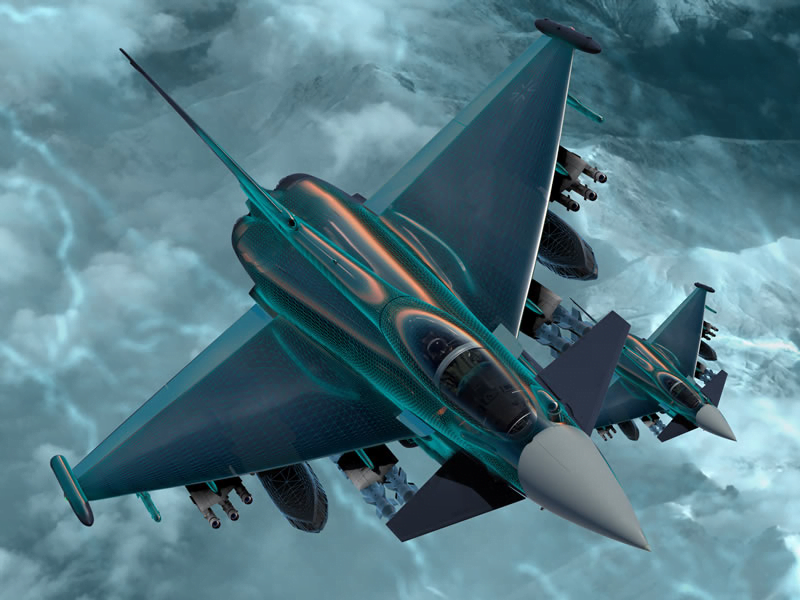By Robbin Laird
The 2019 edition of the International Fighter Conference is now history.
And it was held in the city of Berlin which earlier in the month was remembering the 30 year history of the Fall of the Wall.
That event ushered in the ultimate collapse of the Soviet Union and the end of the Cold War.
But this fighter conference was being held as the challenge of direct defense has returned to Europe.
The Cold War is over but the Russians are back.
And this time they are not alone.
They have core global authoritarian allies in which the 21st century authoritarian powers are challenging the liberal democracies and working to change the rules of the game rather than simply marginally modifying the “rules based” order.
But fighters are not what they once were.
They are now key players in multi-mission and multi-domain operations.
I argued several years ago that the coming of the F-35 would lead to the “renorming of airpower” in which the first generation flying combat system would be a driver of fundamental change in air combat operations.
Indeed, the broader wave of change is clearly upon us in which the United States and its allies are building a new C2 and ISR infrastructure within which fighters both generate, and benefit from in the emerging combat world of “gray zones,” “hybrid warfare,” and contested multi-domain operational space.
If one is looking for a conference which generates a single threat narrative clarifying your thoughts, the International Fighter Conference is not for you.
The strength of this conference is that several lines of thought are put into play, which by themselves may not add up to a single narrative, but spawn several narratives, and several lines of though which requires further examination.
I have come to this year’s fighter conference through a long path, quite literally.
It started in Australia where I attended and have written the report for the latest Williams Foundation seminar, this one entitled, “the requirements for fifth generation maneuver.” Here the ADF has accepted for some time that they are on the path of building a fifth generation force.
The Head of the Australian Air Warfare Centre has defined fifth generation maneuver as follows:
“The ability of our forces to dynamically adapt and respond in a contested environment to achieve the desired effect through multiple redundant paths. Remove one vector of attack and we rapidly manoeuvre to bring other capabilities to bear through agile control.”
Next I went to Bahrain, and participated in BIDEC-19, a conference which focused on the new technologies and technological threats affecting the GCC and its allies going forward.
A key part of the conference was to think through ways to adapt to the new context of conflict and how best to prevail against the 21st century authoritarians.
But clearly, the question being addressed: How best to shape an eco-system for defense modernization and transformation which could enable the GCC states to deal with evolving software and digital revolution?
I mention both of these conferences for the simple reason that many of the same topics were discussed at the fighter conference, something you might not expect if you expected a narrow conversation on the current future pointed nosed assets and their near term futures.
Rather, the fighter conference frames a much wider array of discussions on the overall threat and combat environment facing the current and future fighter fleets and discusses how they can contribute or better contribute to the evolving combat environment, and to be more effective in incorporating evolving technologies.
Over the next few weeks, I will write a series of articles highlighting the different presentations and the issues raised.
Given the multiplicity of issues discussed and from a wide variety of angles, I do not believe a single overview can suffice.
But some of the themes which clearly emerged from the conference, include but are not limited to the following:
- An update on the Future Combat Air System program of the French, Germans and Spanish?
- How the manned-unmanned teaming part of FCAS could enter the market in the next decade?
- How convergent are the projected French Rafale and the German Eurofighter modernization programs? Is it more a case of parallel efforts or cross cutting ones?
- How has the coming of the F-35 affected rethinking about air combat operations? How to better connect fifth generation concepts and thinking with the overall dynamics of change in what I call the shaping of an integrated distributed force?
- How are countries directly threatened by the 21st century authoritarian powers addressing the role of air power in their self-defense?
- How best to train a multi-domain fighter pilot?
- How does the telescoping of generations of fighter aircraft shape the “next” generation fighter?
- How to best address the challenge of affordable capability, remembering Secretary Wynne’s core point: You don’t win anything being the second-best air force?
- Is the combat cloud the best way to think about the new C2/ISR infrastructure which is being crafted, created and shaped for the advanced air forces?
These are some of the issues which I will be dealing with in the weeks to come.
And I will connect those discussions with other interviews which I have conducted over the past few months.
In short, the fighter conference is a place to be for those who are thinking about the evolution of the multi-domain combat environment and how best to prepare those flying fighters to prevail in that environment.
Also, see the following:
And below is the report which we published last year based on the International Fighter Conference 2018:
International-Fighter-Conference-2018


